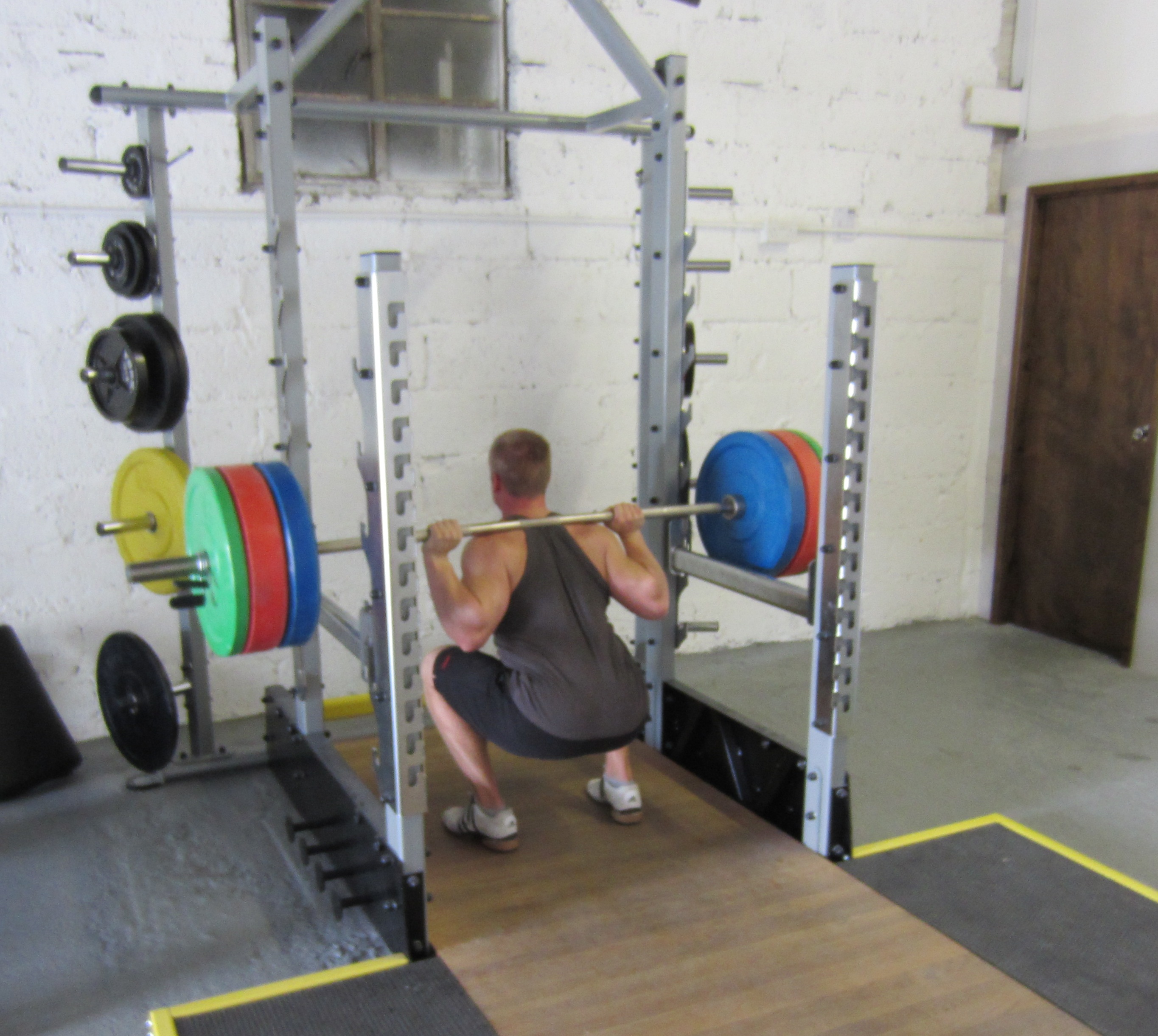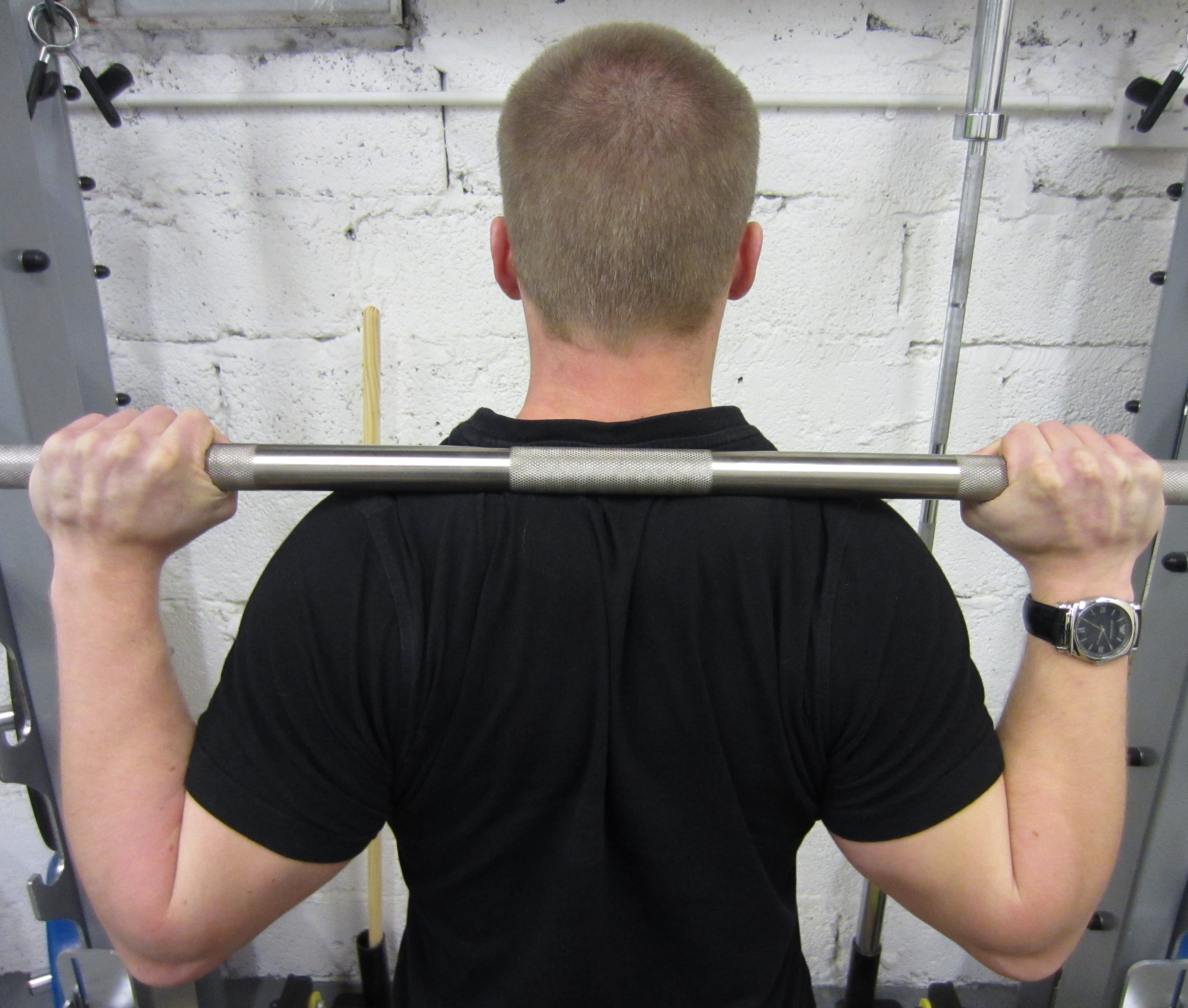Full Depth Back Squat
The Full Depth Squat
The back squat is known as the ‘King’ of all exercises, but too often they are being performed incorrectly and there is much debate as to how implement the squat safely and properly. This article looks to explain how to use the squat as part of program.
 Below are a list of key muscles and their muscle action that are used during the correct execution of a squat:
Below are a list of key muscles and their muscle action that are used during the correct execution of a squat:
Quadriceps – knee extension
Gluteus maximus – hip extension
Gluteus medius – hip extension and lateral hip rotation
Hamstrings – hip extension
Erector spinae – spinal and pelvic stabilisation
Latissimus dorsi – spinal and pelvic stabilisation
Adductors – assist with hip extension and stabilisation
Abdominals – spinal and pelvic stabilisation
Common debates that circulate the squat are the depth to which to squat and whether or not the knees should go past the toes in the bottom position.
During a full depth squat (hips below parallel) the glutes become increasingly more active. In a sporting environment, the glutes are used heavily as a powerful hip extensor. Also considering that the glutes are inactive and not firing properly in most of the population due to poor lifestyle and inactivity, squatting below parallel will ensure that the glutes are trained in a sport specific manner and receive a strong stimulus for growth and activation.
(Full Depth Squat)
(Parallel Squat)
The amount of torque that the knees are subject to brings us to our second issue. It is quite common to see people squatting but not allowing their knees to go beyond their toes. The squat depth and the inclination of the torso will depend on whether or not the knees will move in a forward motion beyond the toes. Shearing forces through the knees are increased by allowing them to move forward. However, if the stress is redistributed evenly via the hip and lumbar spine, as well as the knees, then torque on the knees decreases. Allowing too much of an inclination of the torso will reduce excessive forces through the knee but leaves the lower back open to injury. The key to a safe and effective squat is to achieve a correct balance between the torso having a forward inclination and allowing the knees to go beyond the toes.
(Knees beyond toes – increased stress on the knees, decreased stress on lower back)
(Knees behind toes with slightly more inclined torso – reduced stress on knees, increased stress on lower back)
The text below outlines the key movements that need to happen to execute a full squat:
Start position
– Hands are evenly spaced on the bar as close together as possible to facilitate shoulder retraction. This will help ensure the chest is kept high throughout the movement but will not allow the torso to lean too far forward
– The bar can be placed across the upper traps and rear deltoids (High bar) or across the lower traps (Low bar)

(High Bar position)
(Low Bar position)
– Standing erect through the spine with the hips and knees braced. Feet positioned just outside shoulder width with the feet pointing slightly out, you are now ready to descend
The descent
– Holding your breathe and bracing your abs to increase intra-abdominal pressure, unlock the hips and begin to flex the knees with a slight forward lean on the torso
– Hips should sink below parallel and the feet should remain flat throughout allowing the knees to go beyond the toes but maintaining alignment (i.e. knees not adducting inwards)
The ascent
– Drive feet forcefully into the floor making sure to keep weight towards the back of the foot
– Extend the knees and hips raising the torso at the same pace as the bar
In summary, the full depth back squat is a powerful knee and hip extension exercise, which if implemented correctly, with appropriate loading, will allow strength and hypertrophy adaptations to occur. Full depth squats have shown to reduce knee laxity, improve knee stability and improve ligament and tendon strength by recruiting more fibres. The squat is suitable for any athlete and should not be neglected if seeking performance gains.





